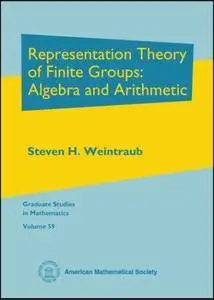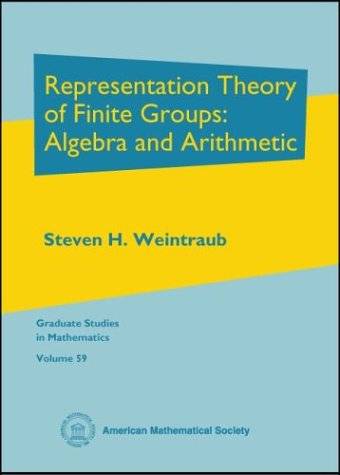Representation Theory of Finite Groups: Algebra and Arithmetic (Graduate Studies in Mathematics) by Steven H. Weintraub
English | 2003 | ISBN: 0821832220 | 232 Pages | DJVU | 1.55 MB
English | 2003 | ISBN: 0821832220 | 232 Pages | DJVU | 1.55 MB
'We explore widely in the valley of ordinary representations, and we take the reader over the mountain pass leading to the valley of modular representations, to a point from which (s)he can survey this valley, but we do not attempt to widely explore it. We hope the reader will be sufficiently fascinated by the scenery to further explore both valleys on his/her own' - from the Preface. Representation theory plays important roles in geometry, algebra, analysis, and mathematical physics. In particular, it has been one of the great tools in the study and classification of finite groups. The theory contains some particularly beautiful results: Frobenius' theorem, Burnside's theorem, Artin's theorem, Brauer's theorem - all of which are covered in this textbook. Some seem uninspiring at first but prove to be quite useful. Others are clearly deep from the outset.And when a group (finite or otherwise) acts on something else (as a set of symmetries, for example), one ends up with a natural representation of the group. This book is an introduction to the representation theory of finite groups from an algebraic point of view, regarding representations as modules over the group algebra. The approach is to develop the requisite algebra in reasonable generality and then to specialize it to the case of group representations. Methods and results particular to group representations, such as characters and induced representations, are developed in depth. Arithmetic comes into play when considering the field of definition of a representation, especially for subfields of the complex numbers.The book has an extensive development of the semisimple case, where the characteristic of the field is zero or is prime to the order of the group, and builds the foundations of the modular case, where the characteristic of the field divides the order of the group. The book assumes only the material of a standard graduate course in algebra. It is suitable as a text for a year-long graduate course. The subject is of interest to students of algebra, number theory and algebraic geometry. The systematic treatment presented here makes the book also valuable as a reference.



